Submitted by Taps Coogan on the 25th of March 2019 to The Sounding Line.
Enjoy The Sounding Line? Click here to subscribe for free.
Enjoy The Sounding Line? Click here to subscribe.
The US economy expanded faster than its money supply during every quarter in 2018, and on the year overall, for the first time since 2010. In other words, the velocity of M1, M2, and MZM (the Fed’s new version of M3, so-called Broad Money) all actually increased in 2018.
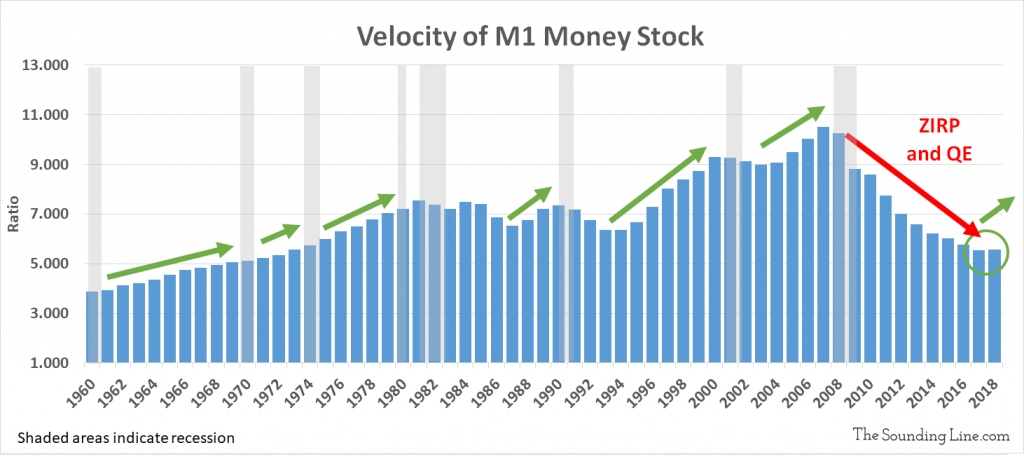
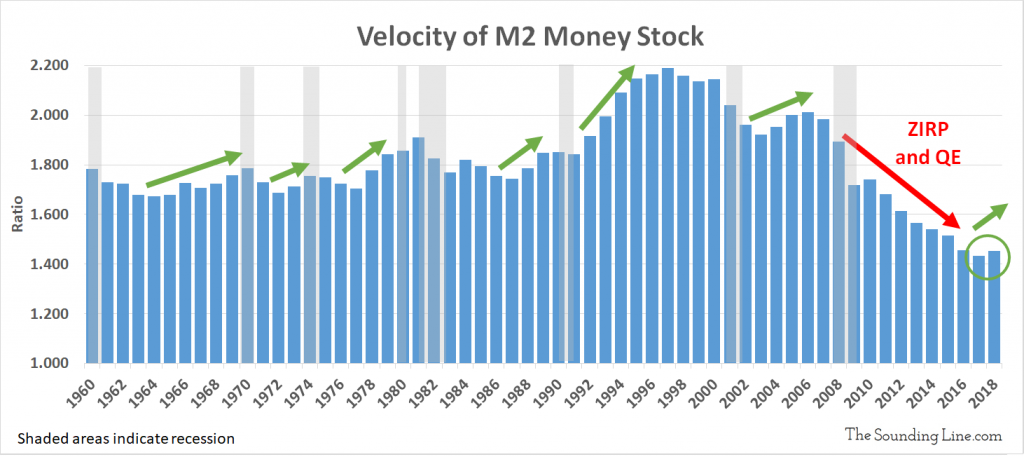
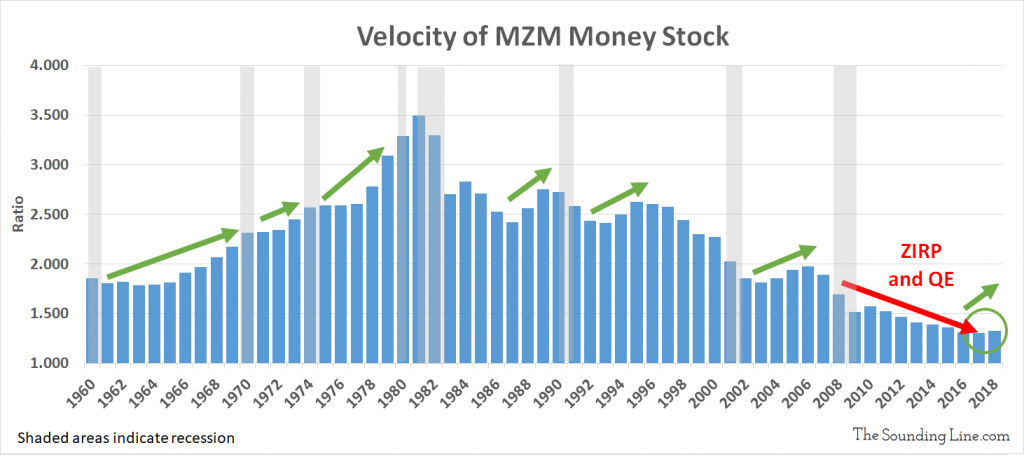
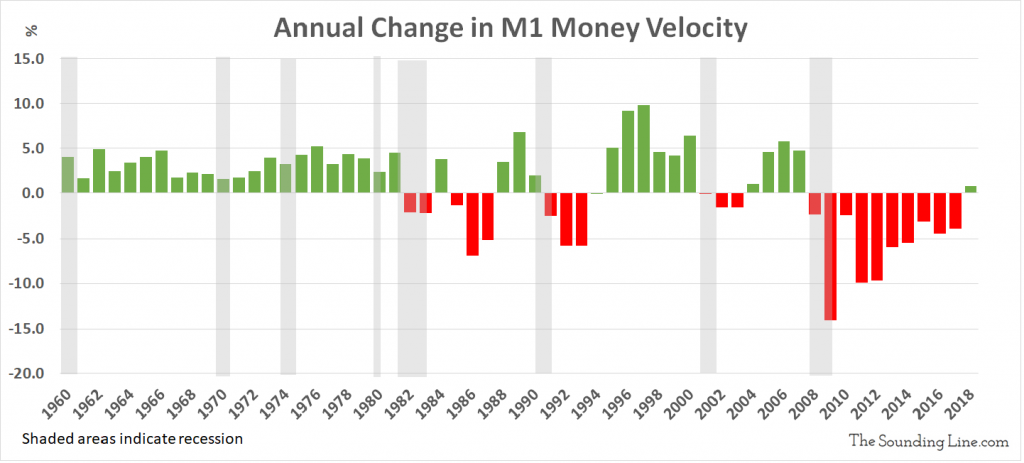
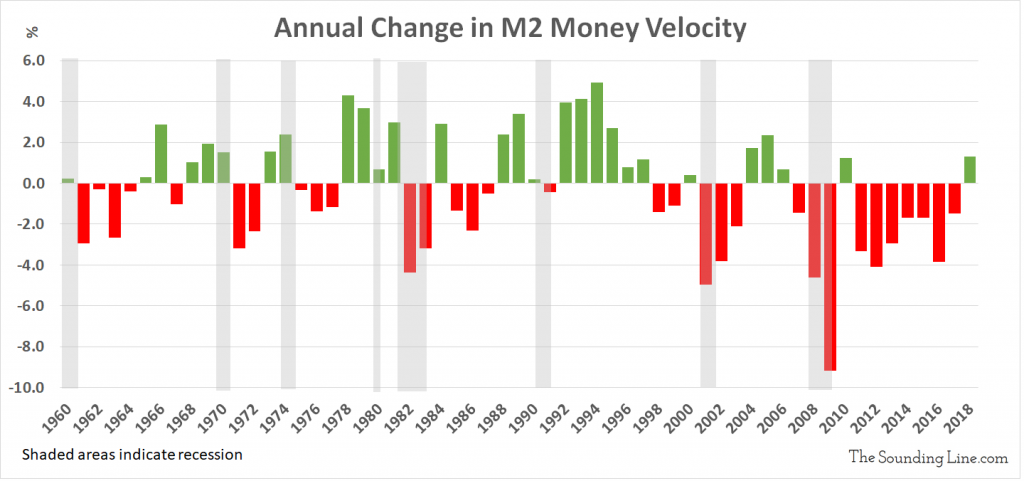
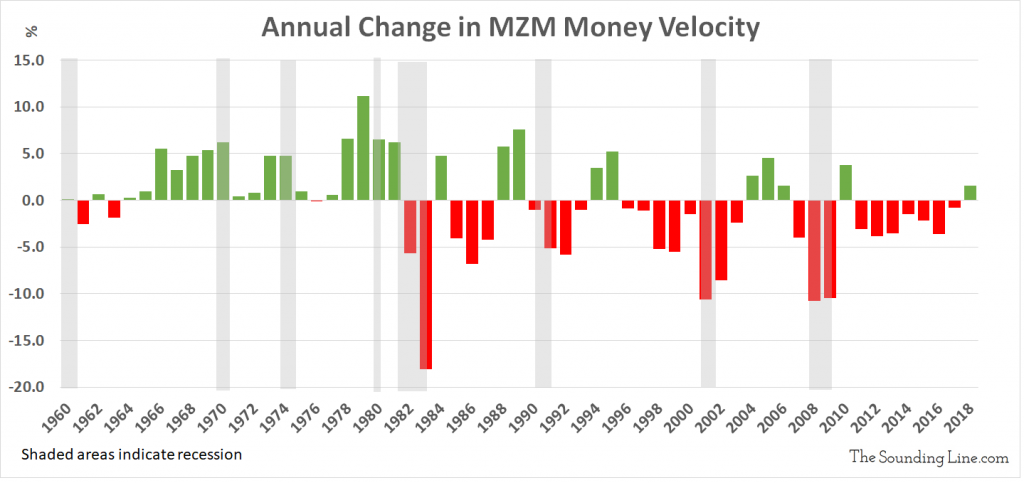
The velocity of money is often described as the rate at which currency circulates through the economy. In practice, it is calculated indirectly by looking at the ratio of economic growth (Gross National Product) and money supply growth. Despite what it is described as, money velocity is really a measure of the relative growth of money supply and the economy.
In previous economic cycles, the velocity of money was a more closely watched economic indicator as it spoke to organic versus momentary induced economic growth as well as the efficiency of monetary expansion in creating economic growth. Since the Financial Crisis and the massive liquidity created through ultra-low interest rates and QE, it became taken for granted that money supply would outpace the economy for the foreseeable future. Accordingly, interest in the metric has waned substantially.
That appears to have changed, at least briefly. With real GDP growth of 2.9% in 2018, despite four interest rate hikes and roughly $400 billion of Fed balance sheet reduction, the US economy managed to flash a glimmer of the sort of ‘organic’ growth that was taken for granted during the height of every past era of economic expansion. Of course, the ‘organic’ growth in 2018 had a great deal to due with a completely unsustainable $1.48 trillion increase in the national debt, and so wasn’t quite as ‘organic’ as it might seem.
With GDP growth slowing so far in 2019 and with the Fed fully capitulating on further interest rates hikes and balance sheet reductions, it’s debatable whether money velocity will increase in 2019.
Nonetheless, however fleeting and unsustainable it may prove to be, the US economy took a small step toward normalization in 2018.
If you would like to be updated via email when we post a new article, please click here. It’s free and we won’t send any promotional materials.
Would you like to be notified when we publish a new article on The Sounding Line? Click here to subscribe for free.

